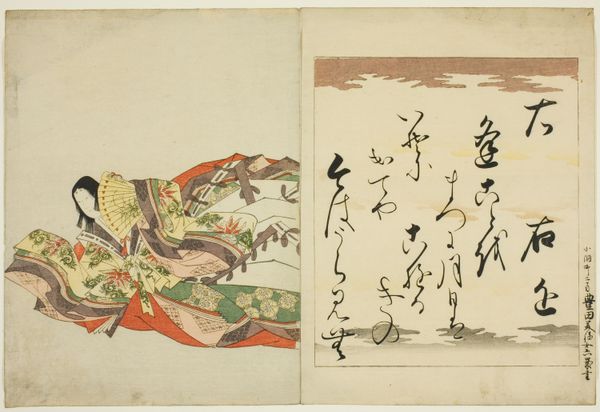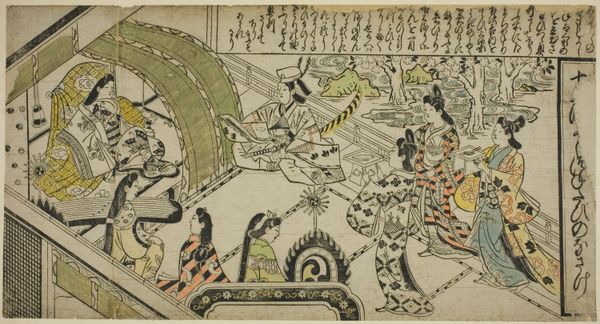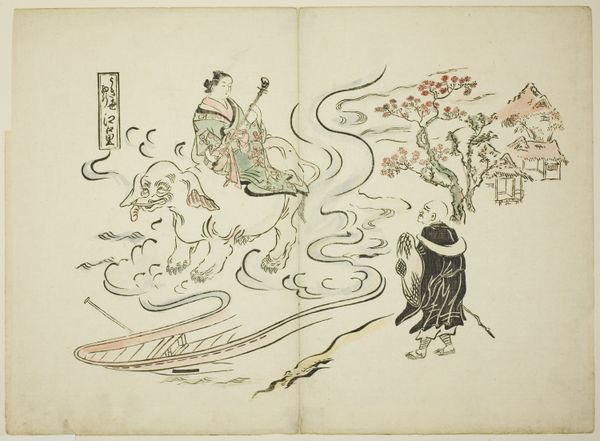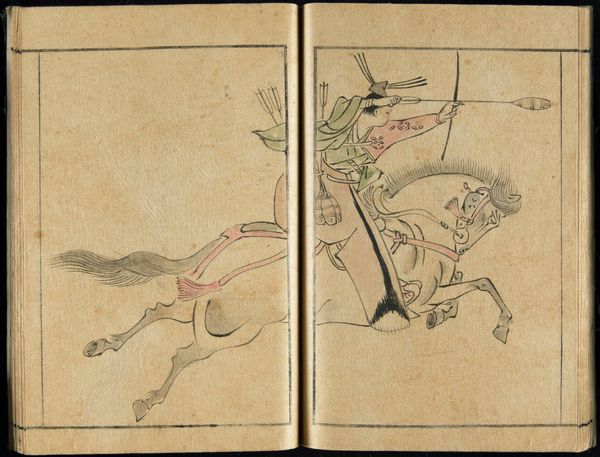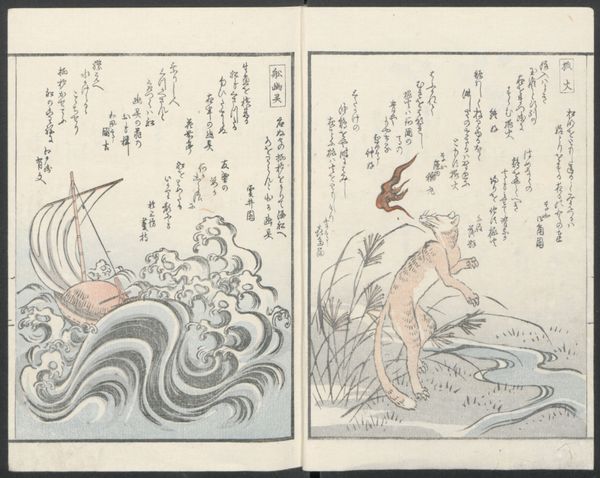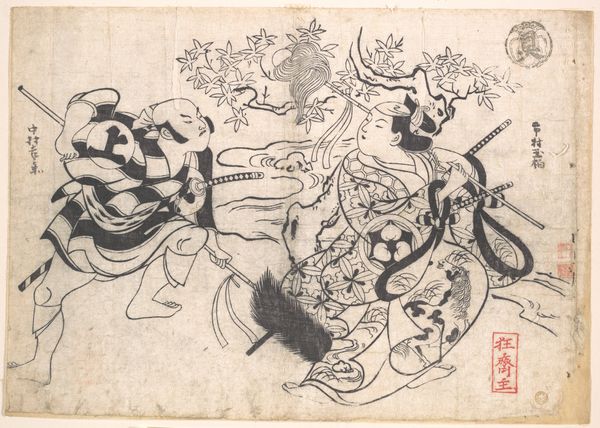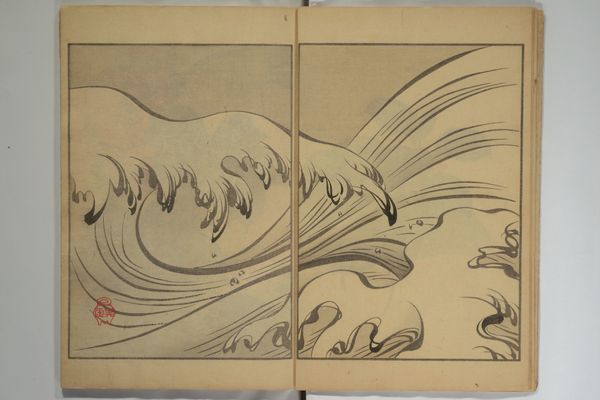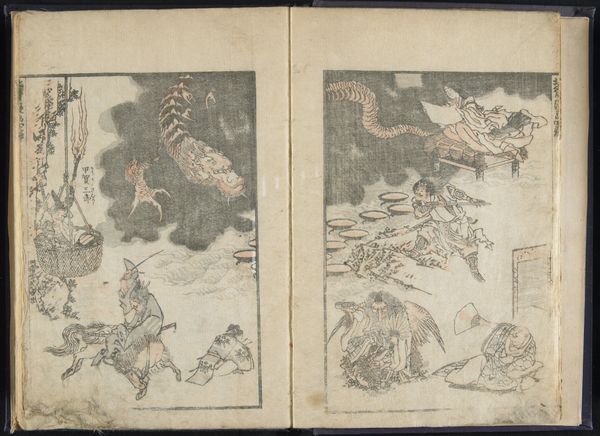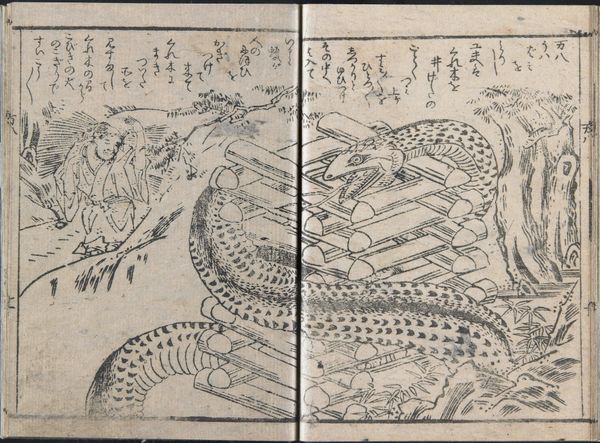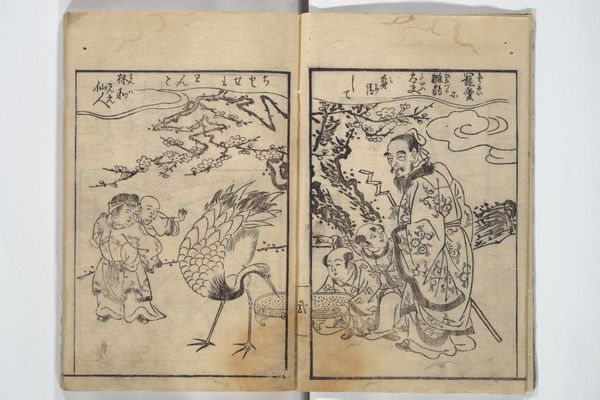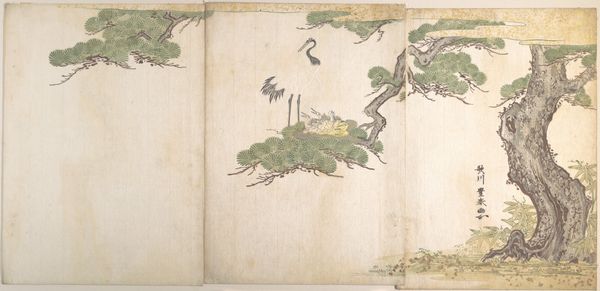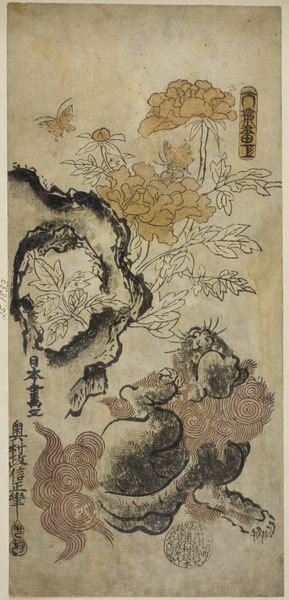
drawing, coloured-pencil, ink
#
drawing
#
coloured-pencil
#
asian-art
#
fantasy-art
#
ink
#
coloured pencil
Dimensions: Image: 11 7/16 in. × 24 ft. 11 3/16 in. (29 × 760 cm) Overall with mounting: 11 3/4 in. × 25 ft. 11 7/16 in. (29.8 × 791 cm) Overall with knobs: 12 5/8 in. × 25 ft. 11 7/16 in. (32.1 × 791 cm)
Copyright: Public Domain
Curator: Before us we have Tachibana Gado’s *The Night Parade of One Hundred Demons*, a drawing from 1892 rendered with ink and colored pencil. What are your initial impressions? Editor: A riot of form and color! There’s something carnivalesque about it, and simultaneously unsettling. These figures...they feel ancient, pulled from the depths of collective memory. Curator: It’s a marvelous glimpse into Japanese folklore, wouldn’t you agree? Look closely at how Gado has applied the coloured pencil. What does that evoke to you? Editor: Absolutely. When you focus on the texture, you start to realize that there are numerous creatures here, almost playfully composed with an aesthetic rooted in *ukiyo-e*. I am struck by how accessible it makes the otherworldly. You see an engagement with class and status. Curator: Yes, very perceptive! What do you mean? Editor: The depiction of the demons—these are not noble spirits or gods. These are the disgruntled, the marginalized. It almost functions as a social critique. Demons riding tortoises – it speaks to the inversion of the status quo, the temporary breakdown of hierarchies. Curator: An interesting way of seeing the procession through social strata... I wonder, considering Gado's position at the time, do you feel he was advocating, perhaps subtly, for a similar unraveling? Editor: It's tough to say definitively with the limited historical material available on him, isn't it? Art never exists in a vacuum though – we have to understand the socio-political context that informs Gado’s worldview. In the Meiji era there was increasing emphasis on modernization at the expense of some traditional elements. Was the intention just observation? Critique? A lament? Perhaps a bit of everything. Curator: A cultural snapshot of shifting values. Well, whatever the purpose, Gado certainly provides an intriguing insight into a fascinating mythological tapestry, rendered through tangible materials. Editor: I agree. I feel a strange kind of resonance looking at this, especially the depiction of creatures seemingly abandoned to their own chaotic devices.
Comments
No comments
Be the first to comment and join the conversation on the ultimate creative platform.
